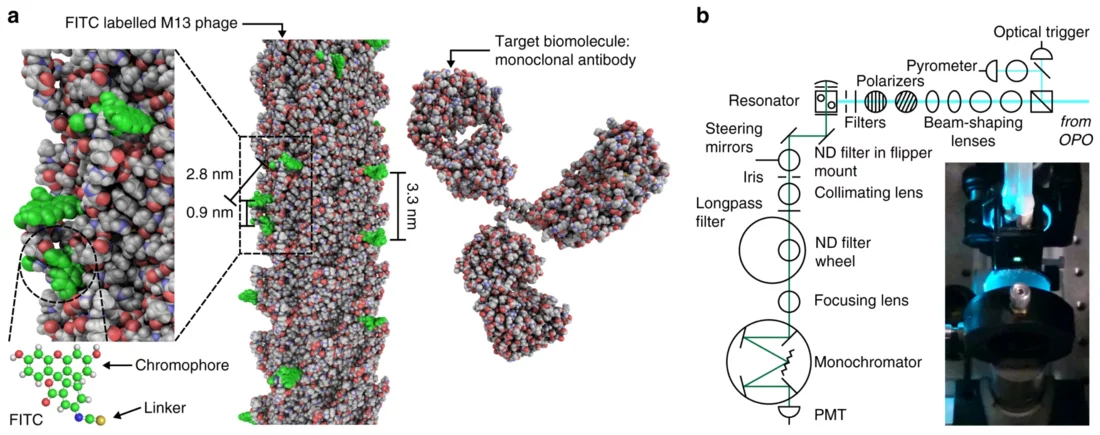The challenge of detecting very small amounts of biological material, for example antibodies and viruses, has recently turned from scientifically and medically interesting to an acute general interest problem. Polymerase chain reaction (PCR) amplification is the current method of choice to address this, but takes hours to complete. We have demonstrated the detection of antibodies in an extremely dilute solution by using M13 bacteriophage virus, linked both to fluorescent molecules and to custom antibody receptors. The detection is based on shifts in the lasing threshold of the solution as a function of antibody concentration. This is a first step in creating compact, sensitive and instantly readable detection kits.
Original publication
-
Hales JE, Matmon G, Dalby PA, Ward JM, Aeppli G
Virus lasers for biological detection
Nature Communications. 2019; 10(1): 3594 (11 pp.). https://doi.org/10.1038/s41467-019-11604-z
DORA PSI
Contact
Head of PSI Center for Photon Science





